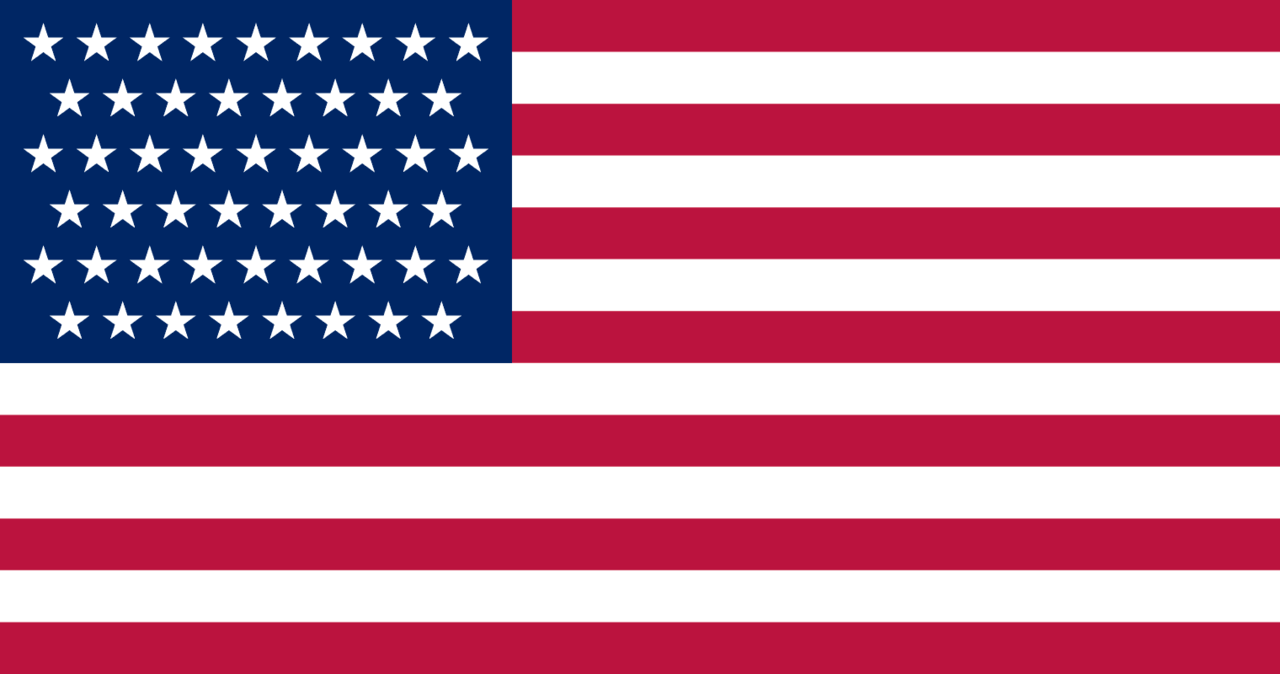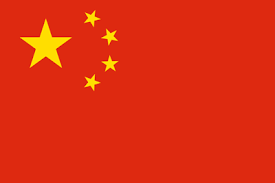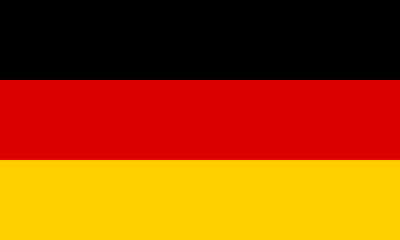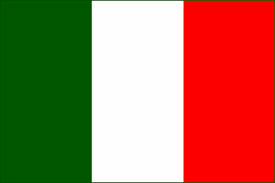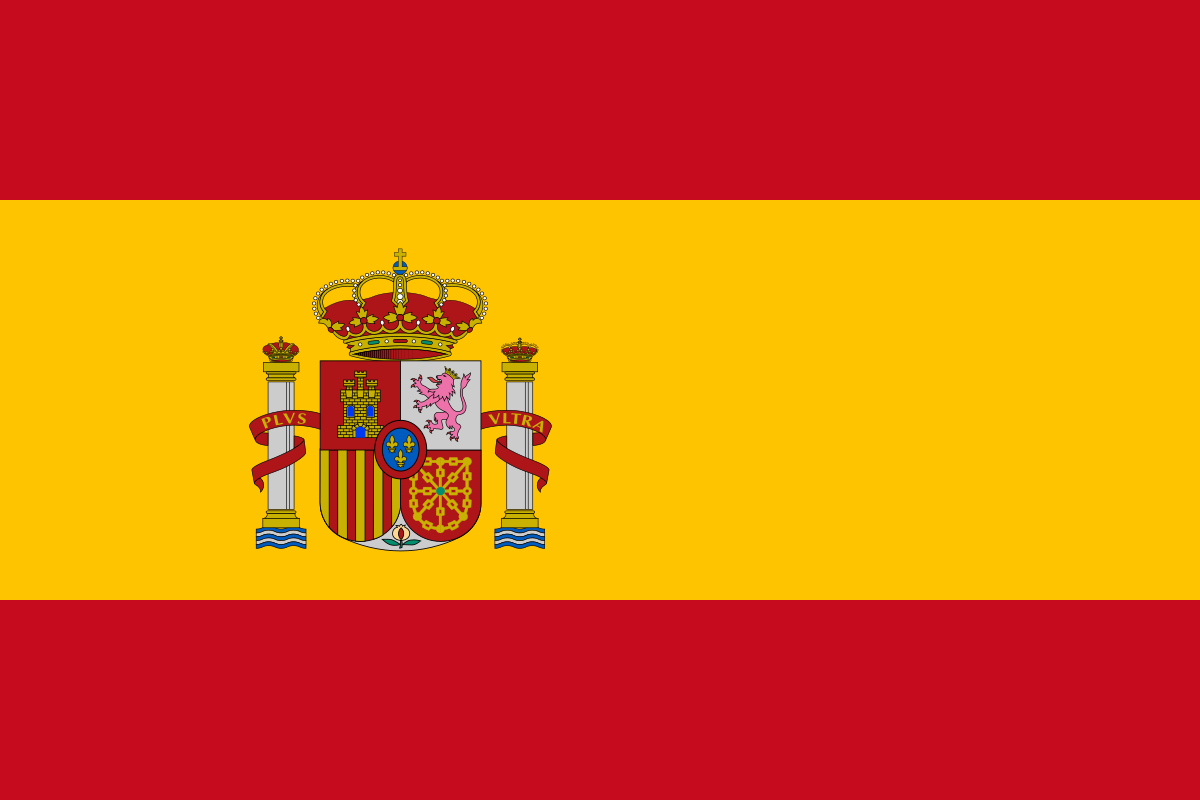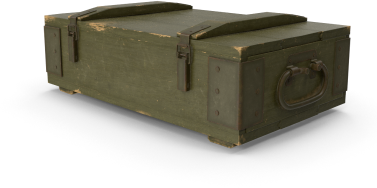On the evening of June 8, all the objectives assigned to the 101st Airborne Division had been achieved, despite the difficulties in gathering and coordinating troops. Nevertheless, the effort had to be focused on Carentan, a strategic carrefour for the Allies.
Carentan is a major strategic crossroads. In the aftermath of D-Day, the priority was to unify the five bridgeheads established in Normandy, in order to form a solid front to repel German counterattacks. The capture of Carentan was therefore essential to link up the troops landing at Utah with those arriving at Omaha Beach. But the terrain was far from ideal for the “Screaming Eagles”. Carentan is surrounded by marshes, which had been flooded by the Germans to prevent allied parachute landings.
The only access route for the men of the 101st Airborne Division was a single causeway with four bridges to cross.

The enemy situation was unknown in Carentan. Nevertheless, there were indications that the city was weakly defended. So, to remedy this, reconnoitering was conducted by Colonel Robert F. Sink of the 506th Parachute Infantry Regiment on the afternoon of June 9th. He reached the outskirts of Carentan via the causeway across the marshes to the north of the town. On the approach to bridge N°4, he was slightly wounded by gunfire.
A second reconnoitering was done that same afternoon. Aboard an L-4 aircraft, Lieutenant Ralph B. Gehauf, S-2 of the 3rd Battalion, 502nd Parachute Infantry Regiment, conducted aerial reconnaissance, but obtained no detailed information about German dispositions in the area.
The actual situation of the German defenses holding Carentan revealed that a battalion of white Russians was in Carentan on June 09. The day before, the men of the 502nd Parachute Infantry Regiment encountered German paratroopers from the 6th Fallschirmjäger Parachute Regiment and made 14 prisoners around Hiesville.
During the night, elements belonging to the 1st Battalion of the 6th Fallschirmjäger Parachute Regiment withdrew southwards, then swam across the canals and marshy area to reach Carentan and establish the town's defenses. These German paratroopers were to be the main enemy force during the Battle of Carentan.
The 502nd Parachute Infantry Regiment Command Post was located about La Croix Pans, northeast of Carentan. Their former mission was to take and defend Hill 30 near La Billonnerie. At 0900pm elements of the 3rd Battalion of the 502nd Parachute Infantry Regiment receive orders to attack Carentan via the causeway leading to bridges N°2, N°3 and N°4 at around 0300am.
 Aerial photograph of the causeway to Carentan, the only way in flooded marsh.
Aerial photograph of the causeway to Carentan, the only way in flooded marsh.
What complicated the soldiers' approach was the causeway itself. Bordered by marshes, the causeway was the only access to Carentan. Infantry advancing along the road were completely exposed to enemy fire from three directions. Snipers could hide in the reeds on either side and artillery could rain shells down on the road. From the solid ground beyond the marshes machine guns could be disposed along the crests and hedgerows, which could sweep through the ranks of exposed soldiers and cause numerous casualties.
Furthermore, the Germans had destroyed bridge N°2 over La Douve river, and engineers had to repair the bridge before the infantry could progress.
Lieutenant-Colonel Robert G. Cole, commanding the 3rd Battalion of the 502nd Parachute Infantry Regiment had sent Lieutenant Ralph Gehauf and a reconnaissance party under the lead of Sergeant Robert O’Reilly at 0015am. The 3rd battalion moved at 0145am. The reconnaissance party arrives at bridge N°2 at 0130am. The equipment was along the bank, but the engineers had been compelled to take cover. An 88mm cannon threatened them and prevented them from repairing the bridge.
So, the reconnaissance party crossed the stream in a small boat. The 88mm cannons opened fire again on the position. The reconnaissance party moved to bridge N°3 through the dark and headed to bridge N°4. A Belgian gate (a heavy steel fence, used as a mobile anti-tank obstacle) across the bridge blocked the advance.
The men on the reconnaissance party budged the Belgian gate so that a man could wriggle through. One by one, the reconnaissance party managed to pass through.
Once they had passed the obstacle, the reconnaissance party soon came under heavy mortars and machine-guns fire. Every man lied flat on their stomachs in the shallow ditch along the embankment. Lieutenant Gehauf decided to hold a little longer in order to get a feel for enemy positions.
He sends Private Willis N. Nichols and Private Roy F. Hilton back across the causeway to inform the lead company of the situation and to get its mortars forward to silence the machine guns. When they arrived at the command post, the attack order had been cancelled for the night, and the battalion came back to Les Quesnils.
Nobody told Lieutenant Gehauf that the battalion had withdrawn during this time interval, and they were still waiting beyond bridge N°4.
So at 0500am, he sent Private First-Class Allen W. Bryant, with a map of machine gun locations, to find out what the battalion was doing. Unable to find the battalion, he returned to Lieutenant Gehauf, assuming there had been a withdrawal. The reconnaissance party also retreated to Les Quesnils at that moment.
At 0930am, the 3rd Battalion received the new attack order, scheduled for the afternoon. This assault would be supported by heavy artillery, and would comprise the following forces:
- The 377th Parachute Field Artillery Battalion with two captured pieces of German Artillery.
- The 90th Battalion with twelve 75mm Pack Howitzer.
- The 65th Armored Field Artillery Battalion with eighteen 105mm Self-Propelled Howitzer.
The information gathered by Lieutenant Gehauf on enemy positions was passed on to the artillery at the stroke of midday.
At the same time, Lieutenant-Colonel Cole and Lieutenant Gehauf realized that nothing had been done to repair bridge N°2. Engineers were gone. Lieutenant-Colonel Cole was furious, which seems relevant, since it’s said that some soldiers feared him more than the Germans.
With rope and planks, Lieutenant-Colonel Cole and Captain Robert L. Clements, accompanied by two men, built a footbridge and completed the improvised repair of the bridge at 0200pm.
 ©IGNRemonterletemps2025
©IGNRemonterletemps2025
At 0300pm, Lieutenant Gehauf and Private Bryant crossed bridge N°2, ahead of the 3rd Battalion, which was moving out on the causeway. “G” Company started out behind Lieutenant Gehauf and Private Bryant.
Crossing bridge N°2 was a slow process. The temporary footbridge was wobbly; the soldiers had to pass in single file. The 88mm cannon could still drop mortars on the column, but no one was injured.
The first part of the advance along the causeway was uneventful. Mortar fire from the 88mm guns harassed the infantry, but caused no casualties, until a German sniper fired on men of “G” Company and missed his shot.
Two men set off in pursuit of the sniper hidden inside a hedge, on a small patch of land in the marshes. They fired at him, and the German sniper went down.
On that causeway, paratroopers were highly exposed to enemy fire, whose artillery and machine guns could spell disaster in the ranks of the 3rd Battalion.
Due to their exposed advance, the men walked in single file on either side of the causeway, keeping as low to the ground as they could, deployed all the way along the causeway.
Lieutenant-Colonel Cole has pestered his men to get up speed, because movement was their only protection, until any further advance seemed impossible.
Three hours passed in the most ominous silence. Most of the battalion was now out on the causeway, stretching along the causeway as far as the Douve bridge.
During his reconnaissance far side of bridge N°4, Lieutenant Gehauf observed from its position that most of the fire was coming from a farmhouse, well protected by hedges, offering the enemy ideal cover to sweep through the ranks of the attackers without exposing himself.
Then, the Germans opened fire on the reconnaissance party, inflecting few casualties. A mortar shell exploded close to the scouts. Private James E. White hit the ground. A second burst got Private Carl Deyak in the head, and a bullet creased Private White through the hair. Private Tony Diaz DeLeon was hit by a bullet in the arm.
The scouts had moved a little too far forward and were in a most vulnerable position. They turned around in a bulge in the embankment which might provide them with a cover. A German must have seen them and fired at them but turned back without hitting anyone.
So the real problems were at bridge N° 4. This was under the front of the enemy position, and the men were all the more exposed and vulnerable as the Belgian Gate only allowed one man through at a time.
As Sergeant Delwin J. McKinney tried, shots rang out in his direction, and he managed to escape by falling into a foxhole. They knew that the German guns were aimed at this dam on the bridge, the only access to Carentan.
As the column moved slowly forward along the causeway, Lieutenant Gehauf provided the artillery with information on enemy positions. The shells were dropping well beyond the German fire positions between the hedgerows, and the artillery should lower its fire about 200 yards.
The only way for the column to advance more effectively was for the artillery to unleash a deluge of steel on the enemy positions, forcing the Germans to keep their heads down and close their firing range.
The artillery worked to cover the infantry advance until 1130pm. After that, Lieutenant-Colonel Cole received the information that the artillery could no longer fire, but never found out why…!
All along the causeway, paratroopers were keeping their heads down to avoid being hit. The 3rd Battalion of the 502nd Parachute Infantry Regiment was stuck for several hours as it approached bridge N° 4.
Withdrawal was not an option for Lieutenant-Colonel Cole. Some men who had already crossed bridge n°4 were completely cut off.
The head of the column collided with enemy fire. Snipers hidden in the marshes fired at men who had the misfortune to be exposed. Up front and in the hedgerows to the right of the farmhouse, German machine guns hammered the causeway with their firepower.
Only a few men had managed to get through the barrage under a hail of enemy fire, but they could go no further.
From midday to 0400pm, the 3rd Battalion advanced to the fourth bridge under constant German artillery fire. The paratroopers crawled forward to avoid machine-gun fire, sniper fire and shells as much as possible: losses were heavy by the end of the day. The men crawled forward under enemy fire. They were completely exposed on the causeway over the marshes, at the mercy of enemy firepower. It was impossible for them to dig foxholes due to lack of earth, and the sparse reeds gave no correct cover.
Despite artillery support to protect the infantry advance along the causeway, this did not prevent the men of the 3rd Battalion from suffering heavily. The lower ground on both sides was flooded but the Germans had established sniper positions and machine gun nests on islands of dry ground in the midst of the swamp.
The 2nd Platoon took position on the left side of the dike, in order to set up a fire position in front. On the other side of the road, a machine gun had been positioned to fire in the direction of the farm. Six men from “G” Company slipped through the Belgian gate, but a seventh was hit by a shot.
The men made a first attempt to remove the obstacle blocking the bridge but failed and deployed to the side of the 2nd platoon position, which was under enemy fire. The men couldn't see the enemy, but their tracer tracks indicated firing positions.
The 60mm mortars and the 81mm mortar of Private Allen Emory were moved closer to the dike. The latter, having taken up position not far from bridge N°4, fired 18 rounds at the German positions in the hedgerows. A shell bursting very close to him forced him to pull back his firing position to fire the remaining shells.
It wasn't until 0600pm that Lieutenant-Colonel Cole left Major John P. Stopka in charge of the situation at bridge N°2. As the battle raged on, the tough Lieutenant-Colonel Cole headed out on the causeway.
All along the causeway, men were taking cover as best they could. There were casualties all along the road.
On the causeway, Lieutenant-Colonel Cole encouraged the men of “I” Company, whom he found with their heads down, to fire back. He yelled: “God damn it! Start firing and keep firing”.
As Lieutenant-Colonel Cole approached “G” Company position, he told a machine-gunner from “G” Company to keep firing, but in bursts of two or three shots.
Captain Clements' men were entrenched on an embankment of the roadway. From this position, the infantrymen continued to fire in the direction of the enemy positions. Lieutenant Irvin fired a bazooka at the farmhouse. The others continued firing on the hedgerows in front of the farmhouse.
As the hours passed and the situation remained unchanged, Lieutenant-Colonel Cole proposed a plan to Captain Clements. Since they couldn't cross the bridge because of constant enemy fire, he wanted to send his company to swim across the canal and establish a position on the other side of the bank.
 Representation of the causeway above bridges N°3 and N°4
Representation of the causeway above bridges N°3 and N°4
“I” Company was the most exposed to enemy fire just south of bridge N°3. The men couldn't dig foxholes in the ground. It had neither grass not trees, nor ditch of any kind to cover themselves. The men moved forward crawling. Those who were hit were already lying down. Keeping his head down, the soldier sees nothing but the heels of the man in front of him, as gunfire hits the causeway.
Captain Cecil L. Simmons and “H” Company moved forward behind the other companies and crossed the 3rd bridge before the movement was halted for the night. Shells fell near the bridge, wounding Lieutenant Robert L. McLauchlin and two men. “H” Company suffered several casualties but weathered the evening better than the other companies.
Night fell and covered the men lying along the causeway. Although the situation calmed down, “G” Company was still under constant fire and suffering casualties.
It was around 1130pm when the men heard the roar of an engine. It was a German dive bomber. It made a deadly pass and dropped several bombs on “I” Company, where the men were hiding from snipers. After this bomb drop, a second aircraft passed by and strafed the roadway. Within minutes, “I” Company had suffered thirty casualties and was out of action.
The men were so exhausted by the day's fighting and the night's bombardment that some fell asleep. They had suffered heavy losses. Lieutenant Robert G. Burns couldn't tell the wounded from the sleeping soldiers. Some were asleep, half-submerged in the swamp water. The icy water didn't even wake them. Others lay along the roadside in their wet jumpsuits.
At sunrise on this Sunday, June 11, it was time to try to cross the bridge. This day would be referred to as “Bloody Sunday” for the regiment.
On the morning of June 11th, Lieutenant-Colonel Cole had around 265 men at his disposal. At 0330am, Captain Simmons and his 84 men of “H” Company led the way, crossing the bridge one by one as fast as possible, then deploying along the road leading up to the farmhouse in the hedgerows and ditches, accompanied by Lieutenant-Colonel Cole.
There was no shooting going on at this moment and “H” Company completed the passage without a loss.
“G” company followed with 60 men, then Headquarters Company with 121 men. “G” and Headquarters Companies deployed forward on the left of the road, setting up on a small meadow bordered by hedges.
“I” Company, which had lost most of its strength, was sent back to bridge N°2.
Lieutenant-Colonel Cole wasn’t satisfied with the spacing of soldiers. He yelled to Captain Simmons: “The company’s too bunched. Those god-dammed Germans are here. They must know we’re here”.
The lead scout, Private Albert W. Dieter moved on the first hedgerow. It was quite calm, but they knew Germans were not far away. Suddenly, rifles, machine guns and mortars opened fire. Private Dieter was wounded in the arm by a burst of machine-gun fire, and without ducking, he returned to Captain Simmons, who had taken cover. Two other men were shot, and several wounded crawled into the ditches, as Captain Simmons dressed his men's wounds.
The whole battalion was vulnerable, with scarcely any cover. The rifle and machine gun fire from the Germans was still quite heavy. From the other side of the road, a sniper continued to fire into the ditch.
A light machine gun was brought to the position and Staff Sergeant John T. White fired 250 rounds in the direction of the hedge where they thought the sniper was positioned, but the sniper kept firing, harassing the position and causing several casualties.
Lieutenant-Colonel Cole crawled along the ditch to join Captain Rosemond, the Artillery Liaison Officer. He asked for artillery fire on the farmhouse and the hedgerows around it, but his request was declined: the artillery commander was away. Lieutenant-Colonel Cole was furious: “God damn it! We need artillery fire, and we can’t wait for a general”.
Finally, fifteen minutes later, the artillery pounded the farmhouse and surrounding hedgerows, but this did not stop the enemy from firing.
“G” Company, pinned down in its position, was under heavy fire from a machine gun and a machine pistol firing from a covert along the hedgerows. They remained in their foxholes, while the action heated around the farmhouse.
As the company was in an exposed position, First Sergeant Hubert Odom took three men with him and a machine gun. They moved crouched along the hedgerow, covering them from the enemy fire pit. At the same time, Private Emory, fired several mortar rounds on a house about 800 yards down the road from which the machine-gun fire seems to be coming. He set it on fire, then he started to fire on a second target.
On their side, First Sergeant Odom’s men advanced cautiously along the hedge. Facing a German on the other side of the hedge. The German shot first on the three men behind First Sergeant Odom. However, one of them returned fire. Then, he continued his advance, along the hedge, crawling in a water-filled ditch. He threw some grenades over the hedge. The machine gun was out, and the Germans had left towards Carentan.
Captain Clements had been hit in the shoulder by an artillery shot during the start of the firefight. This, and the absence of the First Sergeant Odom could have thwarted “G” Company implication when Lieutenant-Colonel Cole needed them the most.
 Lieutenant-Colonel Robert G. Cole presenting his men to Dwight “Ike” Eisenhower, Supreme Commander of the Allied Expeditionary Force, at Greenham Common Airfield, on the eve of D-Day.
Lieutenant-Colonel Robert G. Cole presenting his men to Dwight “Ike” Eisenhower, Supreme Commander of the Allied Expeditionary Force, at Greenham Common Airfield, on the eve of D-Day.
Lieutenant-Colonel Cole's decision marked the battle of Carentan, associating his name with the feat of arms. He required the artillery to fire smoke barrages. He passed the word to Major Stopka, who had to pass the word on to the Company commanders, that he intended to take advantage of the smoke screen to charge the Ingouf farm with bayonets. Then at the sound of Lieutenant-Colonel Cole’s whistle, they were to follow him.
Major Stopka said: “OK!”.
Lieutenant-Colonel Cole told Captain Rosemond what he wanted, and a few minutes later, the first smoke grenades landed in front of the farmhouse. Waiting for the artillery to lay a smoke screen to conceal the charge, the men were about to unleash on the farmhouse.
As the sun rose in the east, Lieutenant-Colonel Robert G. Cole gave orders to attack. It was 0615am. As soon as Lieutenant-Colonel Cole heard the shells firing, he blew his whistle and rushed across the ditch.
Only 20 men followed him in this bayonet charge. Major John Stopka, his executive officer, relayed the order and yelled: “Let’s go! Over the hedge!”. He was followed by 50 men from “H”, “G” and Headquarters Companies.
Why did so few men follow Lieutenant-Colonel Cole?
In the first place, Lieutenant-Colonel Cole had failed to check that his entire command was aware of the plan and waiting for a signal. There was therefore an initial hitch in the transmission of the order to the entire regiment.
In the tumult and noise of German fire, few men received their instructions. The men were scattered, and some units returned German machine-gun fire. Others had no officers present. Many of the men never received the order.
Some heard something passed on to them about “whistle” and “bayonet” but in the confusion could not tell what was said. Others heard nothing. Still others got the order but didn’t hear the whistle blow and didn’t know the advance was on until they saw the trickle of men crossing the field. Then a few raced on, trying to catch up.
Captain Simmons and Sergeant White hadn’t heard Lieutenant Cole’s order. Captain Simmons heard someone talking about a “whistle” and a “bayonet”, but it wasn't clear to him what was going on. He was knocked unconscious by a close explosion. He regained consciousness when Sergeant White shook him.
Captain Simmons and his men trotted across the field where heavy machine guns were still firing. Under fire, they rushed along the ditch and shot a few Germans, and they shut down the machine gun.
Some of the men hit the ground when the first heavy fire came at them, but Lieutenant-Colonel Cole urged them to get up and go on.
He kept firing his Colt.45 in the direction of the Germans and he yelled: “God damn, I don’t know what I’m shooting at, but I gotta keep on”. Lieutenant-Colonel Cole jumped through a hedgerow and ended up in a water-filled ditch. He yelled to his radio operator, Technician Fifth Grade Robert E. Doran: “Don’t follow me!”.
Major Stopka kept yelling: “Let’s go! Let’s go!” and ran on, hurdling the first ditch.
The smoke began to clear, and men were falling, but the assault continued, throwing themselves into the ditches dug by the Germans. The men reached the house wave by wave. Others caught up with the leaders and passed them. Most of the Germans had fled in the direction of the railroad tracks. Many others were dead, lying in their foxholes.
“I" Company, heavily damaged by the previous night's bombardment, had dug in behind bridge N°4. As fire ricocheted off the Belgian Gate, some men managed to take cover. Others had gone up and joined the skirmishes, continuing to fight in scratch groups.
Some of those who followed Lieutenant-Cole were Lieutenant Edward A. Provost of “H” Company and Technical Fifth Grade James O. Brune with 9 men. Five were hit. They made their way next to the house. Overrunning the empty farmhouse and drawing abreast of the orchard, men of “H” Company spotted a machine gun nest.
A grenade was thrown over the hedgerow and exploded among the enemy soldiers. They followed up the grenade by rushing the enemy position and killed Germans with their bayonets.
More men joined them and advanced up to the hedgerow behind the farmhouse. As they approached the orchard, two squads of Germans were gathered between apple trees. Lieutenant Provost and his men opened fire from the hedge, and few Germans were hit. The rest started to shoot back. Lieutenant Provost was hit and the Germans retreated toward Carentan.
Private Roach and First Sergeant Kenneth M. Sprecker of “H” Company had been the first men to reach the house. They shot the lock off the door and ran inside. The place was empty. Sergeant Sprecker saw a couple of Germans in the orchard behind the house and shot them from the back of the building.
Sergeant Sprecker took charge of Lieutenant Provost's men, wounded in the face, and continued firing until the entrenched Germans waved a white flag and surrendered, bringing the orchard firefight to an end.
Here, an example of German defensive positions, showing how difficult it was for men to fight in the hell of the hedgerows, as experienced by the men of the 502nd Parachute Infantry Regiment during the bayonet charge.

The Germans took up positions behind and parallel to the hedges which formed a natural barrier. A man could shoot through it without being seen because of the thickness, giving defenders an advantage over attackers exposed through a field. This was a difficult target for mortars.
Behind these hedges, the Germans had time to set up their defensive positions. They dug foxholes that were lined up and spaced more or less evenly between the machine-gun nests.
Private Bernard Sterno of “H” Company had also followed the charge. As he was charging with a jammed M-1 rifle, he saw a dead German and a pistol with a cord tied to the body. The soldier cut the rope to take the pistol. Suddenly, he felt a bump in his finger, but with the glove he hadn't seen that he'd lost a finger!
He crawled forward and saw another man from his company. He was shot in the chest. Private Sterno could do nothing for him, as an aid-man told him that his hand was all bloody, so he bandaged the lightly injured Private Sterno. Then they heard someone call: “Help me”. It was a Sergeant from his own company. Private Sterno crawled up to him and gave the sergeant rude first aid, while the medic was shot dead. After that, he headed to the house.
At the same time, 88mm artillery was raining down around the farmhouse. Private Sterno jumped into a water-filled ditch and fired into the enemy line of fire.
In the meantime, his bandage had come off. A medic had told him to go to the back and have his finger looked after. There were many wounded in the ditches, and he thought he'd better help them. He had taken care of a soldier with an eye wound. He had started to tend to the other wounded when they heard the sound of another round of 88mm artillery.
He had jumped into a ditch for cover, but was hit, felt something heavy hit his back and shook him. He wasn't sure if he was hurt at the time. In fact, a shard had ripped into his back and stopped in the groin though this wasn’t known until he was thoroughly examined on the ship the next day.
Mortar fire wounded many men, including those wounded during the day and the bayonet charge. Private Sterno was unable to help them. He had crawled to a foxhole on the outskirts of bridge n°4. A mortar shell exploded near him, and a shard wounded him in the neck.
About an hour after the charge, Captain Simmons went to the farmhouse to join Lieutenant-Colonel Cole, who had established his command post in it. Of the 84 men of “H” Company he had, he had only 30 left.

The battle ceased for the moment. The surviving men set up defensive positions where the Germans had been, knowing that they would be hit by enemy counterattacks and that they had been weakened by the fighting. Knowing his situation, Lieutenant-Colonel Cole sent Private Doyle Bootle of Headquarters Company for Lieutenant-Colonel Cassidy to send his 1st Battalion of the 502nd Parachute Infantry Regiment as reinforcements, as the losses of the 3rd Battalion had been high, and it was badly depleted.
Thus, the 3rd Battalion of the 502nd Parachute Infantry Regiment, lost 550 men, including 101 killed in action (KIA), in the assault on the causeway and Ingouf Farm, that was 67% of its strength between June 10 and 13, 1944.
The 3rd Battalion had not managed yet to complete their mission. The battle for Carentan was far from over. The bloody battle of the cabbage patch was decisive in the taking and liberation of Carentan.
Written by Hugo Di-Fazio, NAH Executive Assistant.




